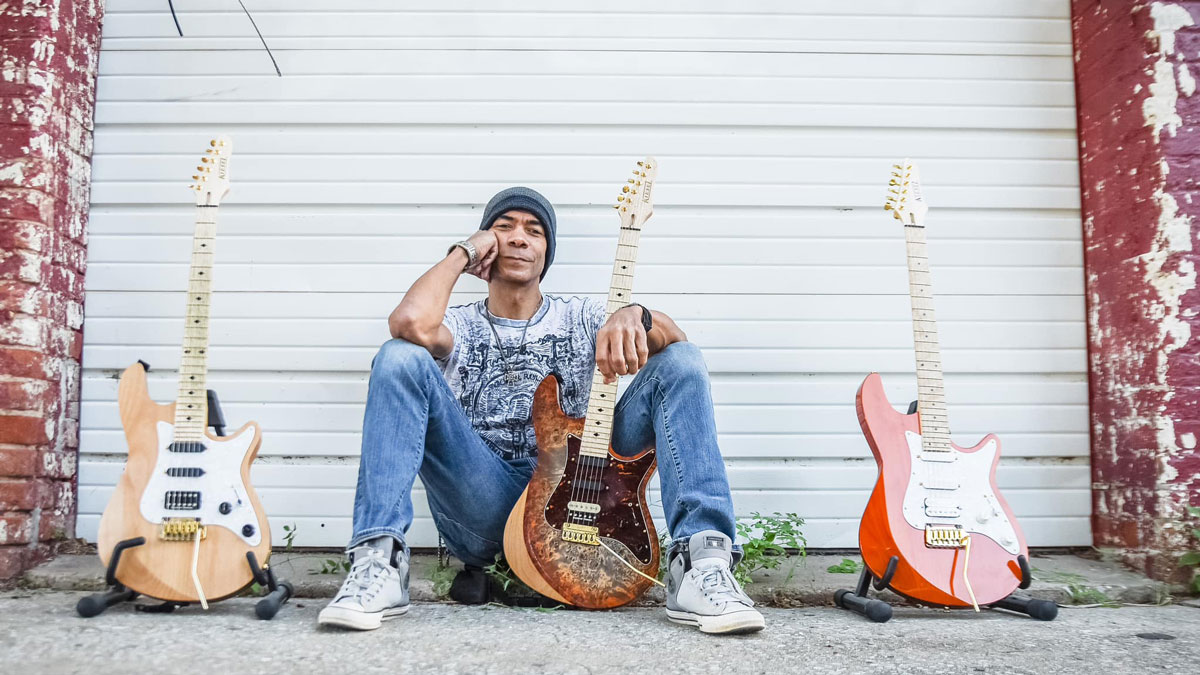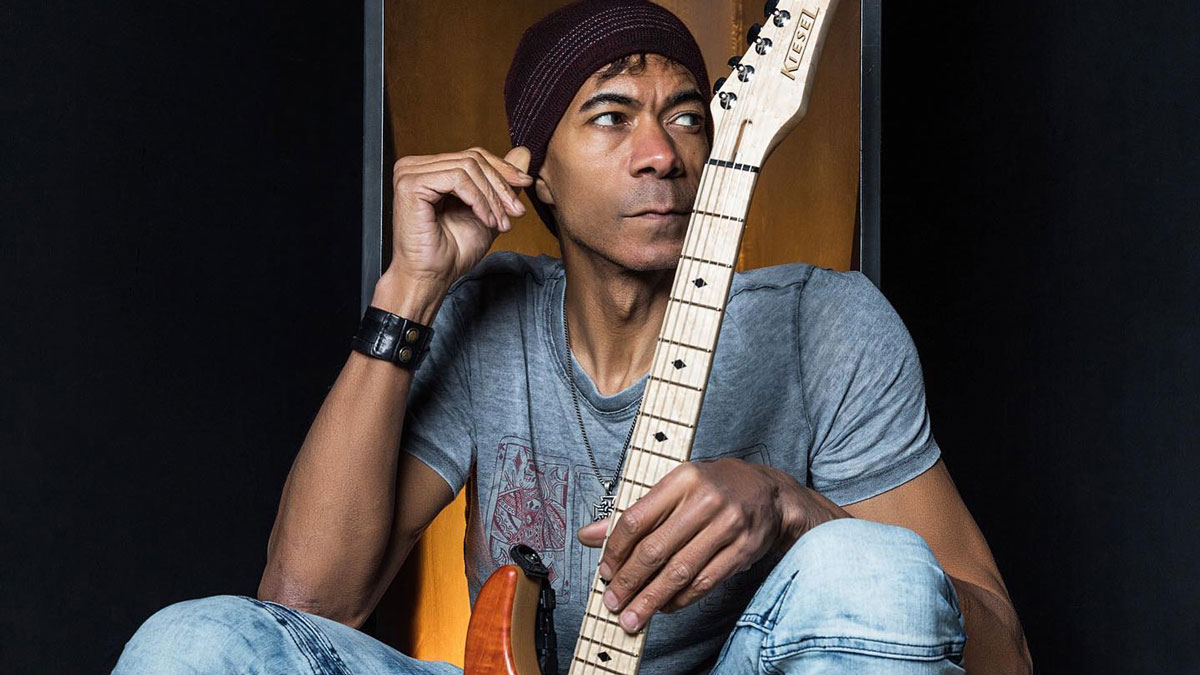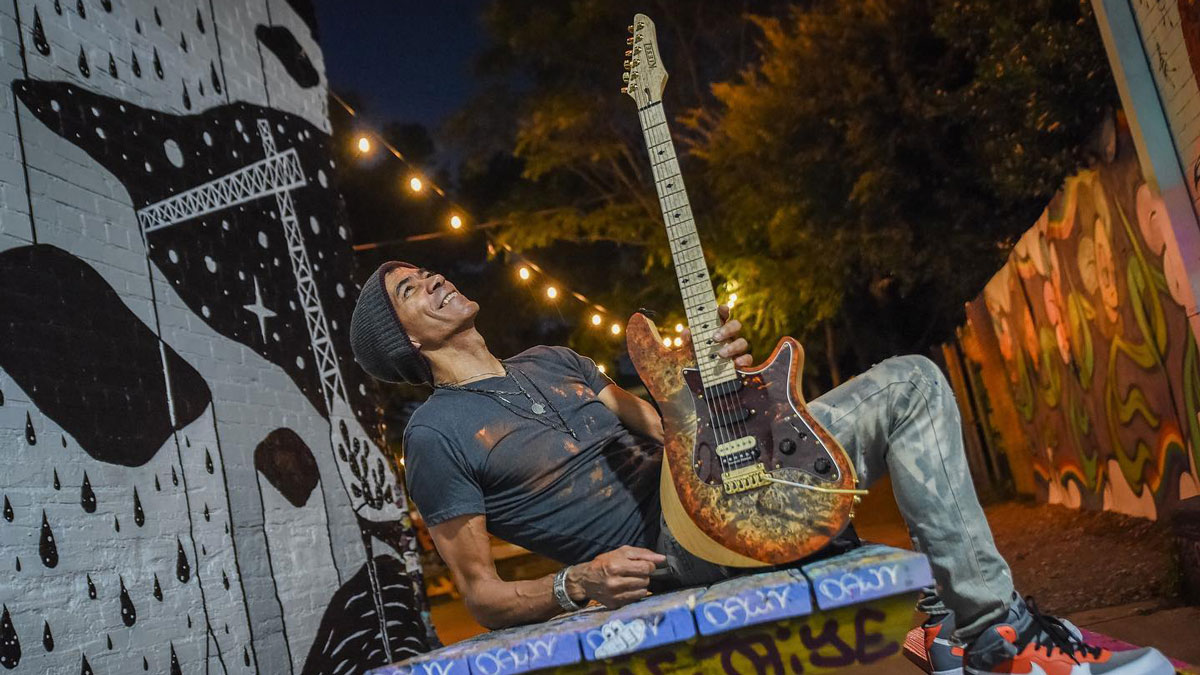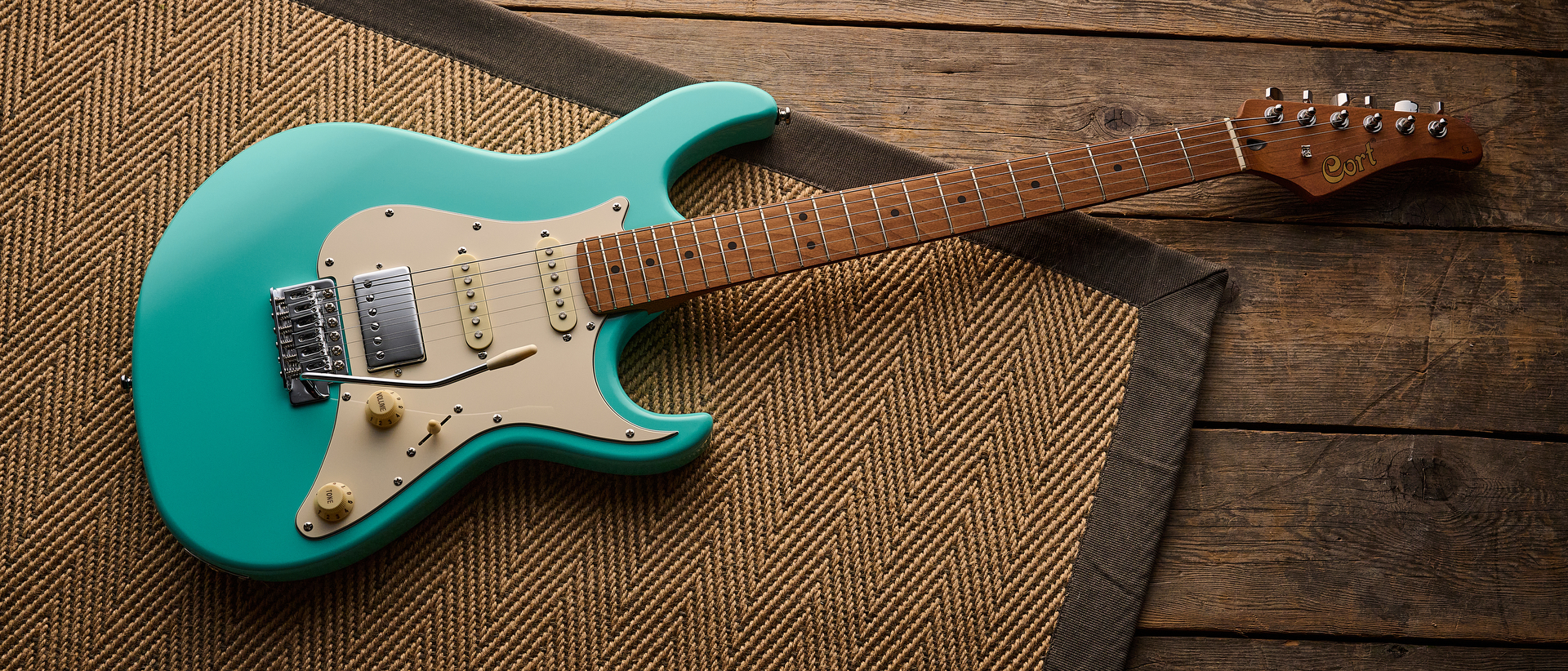Greg Howe: “I realized that I wasn't going to push pure technique any further than Paul Gilbert or Jason Becker. So, I thought, 'OK, what am I going to do after that?'”
The master guitarist reveals how he's moving forward after the tragic death of his fiancé and manager, how he blended John Scofield and George Benson with Van Halen, and the solo album he hopes people have forgotten

Greg Howe has always been intrepid. He's never been one to settle. And he's seemingly never had much interest in being a part of the herd.
Since the late-'80s and early, Howe set a standard that few could match through unmatched compositional prowess and records such as Greg Howe (1988) and Introspection (1993). Through an aggressively articulated tone and uninhibited approach, Howe settled in as an anti-hero of the shred era, making his territory with vigor.
But still, Howe is often lumped in with his contemporaries of the shred era, much to his chagrin.
“The challenge I've faced over the years because I've came up in that era is getting people to see me outside of it,“ Howe tells Guitar World. “Because coming up through Shrapnel [Records] and being in the company of all those amazing shred guys like Paul Gilbert and Jason Becker has made it that I'm often associated with that first and foremost.“
“But don't get me wrong,“ Howe insists. “Those guys and that style were innovative for that era, but the whole heavy metal, in-your-face, way-too-many notes thing was cool back then and never appealed to me. I participated, but I grew out of it. I never did the neoclassical thing. I never tried to do the whole 'Bach rock' thing. But there was a certain note density requirement, so I tried to do different things that set my songwriting apart.“
Given his mindset, and propensity to avoid toeing the industry line, it surprised many when Howe moved in a more commercial direction in the late-'90s. And it was even more shocking when the heady shredder took the stage with the likes of Michael Jackson, Enrique Iglesias and Justin Timberlake, to name a few.
And while gobs of money and a different sort of fanfare surely came Howe's way through his foray into pop, none spoke to his soul. After years of playing a sideman, Howe recalls being tired of the lifestyle, leading to a shift in a career that's been earmarked by expecting the unexpected, “I had to walk away from it," Howe reveals. “Sure, it was cool for a bit, but to keep doing it was becoming disingenuous.“
All the latest guitar news, interviews, lessons, reviews, deals and more, direct to your inbox!
I am quite inspired because there are all kinds of new emotional areas and uncharted territory in terms of where I reach for inspiration.
He continues, “I've put a lot of time into my guitar playing, you know? I didn't practice all those hours and learn how to do all these things just so I could play barre chords for some twenty-two-year-old pop star. To do so felt too safe and disrespectful to whatever power above has given me these cool abilities. I had this internal obligation to get back to what I do. But I gave up a lot to do that. It was worth it, and it's still worth it. But I left a lot on the table when I walked away from all of that. But it feels good to be real.“
Preparing to hit the road for the first time since 2018, Greg Howe dialed in with Guitar World to dig into the trails of the last five years, his evolution as a musician, his definitive artistic statement, and the latest and greatest additions to his ever-evolving rig.
You've been mostly dormant for the last few years. What are you most looking forward to as you prepare to get back on the road?
“Yeah… that's true. I've been mostly clamped down in the last few years because of all kinds of things. I really haven't been out on tour since 2018. COVID hit, and then the lockdowns came, so that took me off the road. And then, I went through a lot of personal issues with my fiancé, who was also my manager. I was pretty much in caretaker mode for her until she, unfortunately, passed away from cancer last year. So, for a couple of years there, I cared for her full-time. So, I think it will be good to get back out and perform just to get out of the house.“

Has what you've been through over the last five years changed your perspective on music and the guitar?
“That's a good question. I don't know… I'm not sure that it has changed things. Well, I'm sure it provided a different avenue of inspiration, which has probably allowed me to pull new forms from some less familiar directions. So, I am very inspired right now. I wanted my next album done before this tour, but it's been too crazy.
“After my fiancé's passing, I went through all that came with that, and I also needed to get a new manager. I had to move, and a ton of things had to be done. So, I didn't have time to finish the record. But I am quite inspired because there are all kinds of new emotional areas and uncharted territory in terms of where I reach for inspiration.
“But I don't fully know and understand all of that just yet because it's so big and a little disorienting. So, I'm not sure exactly where I'm at right now. But I certainly feel like things like this can take you out of the game entirely and, at the very least, knock you down. Or they can make you stronger. So, I feel like I'm winning that battle.“
Have the events of the last five years forced you to reconsider what you've already completed?
“Not wholesale. And I wouldn't say forced, either. But they've led me to revisit certain things and maybe adjust. Because I was working on a lot of this stuff from 2019 through 2022, it got put on the shelf. And when I took it off the shelf, I was like, 'Okay, this is cool.'
“But some of it l liked better than I thought I did, and other things I found were not as cool as I thought. Most of it is great, but there's some stuff I need to tweak or make stronger. Again, I feel like I have a new perspective now, so it makes sense to revisit what I've done and see if I think it needs to be done differently.“
If you had to paint a picture of the guitarist you are today, how would you do it?
“I look at the guitar as the icing on the cake. I don't think of it as the primary thing that I do. It's just a fun thing to do after I've done the real thing: create a song. That's always been my mindset, so nothing is different there. With regard to music, the guitar has never been the foundation; it's a very distant second. If somebody told me, 'Hey, they're going to make the guitar illegal to play, and can't do it anymore,' that would not in any way make me less interested or involved in music.“
I'm not one of those guys that just put a nice chord progression together in cool groups just as an excuse to blow a bunch of notes over them
So, you see yourself as more of a composer than just a guitarist?
“If I could no longer play guitar, I'd be just as interested in music. I'd create music in other capacities because the guitar is always second on the priority list. So, I hope that people understand that. Music is about making someone feel something. It's about trying to tell a story with a composition. That's always been my foundation.
"If you've listened to my music, I'm not one of those guys that just put a nice chord progression together in cool groups just as an excuse to blow a bunch of notes over them. That can definitely be fun to listen to sometimes, and I know some guys are great at doing that, but that's never been the case with me. Philosophically, my mindset remains the same.“
Are there any style cues that have changed?
“Going back to those early days, I realized that when it comes to pure technique and executing notes, I was not going to push it any further than guys like Paul Gilbert or Jason Becker. So, I was like, 'Okay, what am I going to do after that?' So, I think my expansion came in composition, harmony, and implementing more influences like John Scofield.
“It became, and has always been my thinking, 'How can I take some sort of musical sophistication of Scofield and George Benson and then bring the energy and the fire that you hear with Van Halen?' And so, that's been my thing since my Introspection album.
“I don't want to say I hate the other types of sounds, but I really appreciate the more sophisticated energy in lead guitar playing I brought there. I've carried that mindset with me since, and that's been the most significant change; to have guitar playing with harmony and intellect.“
Do you see Introspection as your definitive statement?
“I'm not sure. It's hard to say because so much can vary from album to album. But fundamentally, I want my albums to be like a Disney ride. I want you to get on the ride, and then I want to take you to these different places. And when you're done with it, I want you to come out the other side going, 'Man, that was fun. I'd like to go back and do that again.'
“That's what I really want. But I don't want it to be because of a bunch of crazy stuff, but because of different moods, colors, textures, sensibilities, and all these other emotional triggers.“
And which of your albums do you feel accomplishes that best?
“That's another good question. The albums that are the most popular are sometimes, I mean… I liked them, but some albums have gone way under the radar that I'm proud of. I'm proud of an album that I did called Five, even though sonically, it's really not great. But I liked that album because it accurately depicts what I'm describing.
“But I liked the Introspection and Extraction CDs – they both came out really nice. And then, my last album, Wheelhouse, also did what I'm saying, too. So, I'm proud of that, too. I guess, to some degree, all my albums have what I'm saying, but some more so than others. But I would say the album with the least of that would be the Ascend album, which I kind of hope people don't know much about. And that begs the question of why I'm mentioning it at all [laughs].“
What is it about Ascend that you don't like?
“It's an album that, believe it or not, comes as close to what we get criticized for doing as artists: selling out. So, Ascend was an album stylistically motivated by what I thought would be a nice financial payoff with our Japanese licensing label. It does have a lot of that Bach thing going on, which, as I said earlier, has never been my thing.
“And there were a lot of issues with record labels when I did that, so I ended up playing guitar and bass and then had to produce and mix it myself. So, Ascend became an album that had me all wrapped up in it. It's very neoclassical and was the first time I'd ever done anything like that. It wasn't a lot of fun, but it did great in Japan for whatever reason.
“So, when Ascend came time for me to do the next album, the Japanese label asked if I'd do another album like that. So, we talked about money, and some big money offers were thrown around, which sounded very attractive. So, I thought, 'Well, maybe I'll do this.'“
Do you regret that?
“It was one of the most challenging times for me as a recording artist. I had my chops up so high by that point because of the music I was making, which was cool. But that sort of thing is not really what comes from my soul. It's something I chose to do; for me, it wasn't easy. So, it's the closest I've ever come to selling out. And it was a difficult lesson that I had to learn because I did the opposite of what felt right.“
That period seems like a dividing line in your career between selling out and making music that strictly spoke to your soul. Would you agree?
“I think so. I think it gave me clarity about the fact that – and this has been the case for my whole life – anytime I've ever made a decision based on monetary reward or being compensated, it has backfired every single time. So, I don't do things based only on money anymore. I have to believe in what I'm doing, and it has to come from an honest place.“

You worked with artists like Michael Jackson, Enrique Iglesias, and Justin Timberlake during that same period. Did that change you as a guitarist at all?
“I don't think so. It was a completely different line of work. So, as a musician, it tends to change you negatively if it changes you. Because when you're doing that kind of music, you become a session player. If they want it to be a funk thing with a lot of compression, or a more open, clean sound, you have to be able to know how to do those things.
I'm happy to be doing what speaks to me most now
“You have to be able to fulfill and understand their vision and dial it in quickly. And you have to be able to get along with people and be responsible because you'll be on bus rides. So, you can't be out partying too much the night before [laughs]. But when it comes to actually playing the instrument, I'd be lying if I said it's super-demanding. It's not. At least not in the same way.“
So, what was the most demanding aspect, then?
“The demand was more from getting the sounds exact, making sure my pocket was right, and just that type of thing. So, the way I looked at it was I was getting paid all this money to essentially be in a cover band, travel around, and visit cool cities. It was a really cushy job. And it made sense because I was single, so traveling around was fun. Plus, making all that money to play easy music was cool [laughs]. But it can make you lazy if you're not careful. I'm happy to be doing what speaks to me most now.“
Speaking of that, are you deploying any new amp combinations as you prepare to hit the road?
“I've been with DV Mark Amplification for nearly 10 years. We've done some great things together with my GH 250 signature amp. It's a great 250W solid-state amp that's the most tube-like-sounding solid-state amp I've ever used. And so, through trying all these different things with high-gain amps over the years, we came close to what I liked but never quite nailed it.
“But recently, we've put together an amp reminiscent of an old-style Marshall JTM45, which is a great pedal platform. It sounds amazing, and it will be called The Professor. I don't have one yet, but I think I'm supposed to be getting it this month. So, if I get it this month, I should be taking The Professor out on tour with me this summer.“
What makes The Professor different from the GH 250?
“It's not high gain, so that will be a change. But aside from that, everything will be in front of the amp. It won't be a scenario where I run two separate cables in my effects loop. My main connection will be in front of the amp. But it's also a great pedal platform, which I really wanted. It's a very simple setup. I'll come out of my guitar, go into my pedalboard, out of the board, and right into the front of the amp. It's not extensive. There's no wet/dry/wet stuff happening or any modeling. It's a very straight-ahead, old-fashioned rig.“
Any updates with regard to your Kiesel signature guitar, the Lyra?
“I'm proud of the Lyra because I got to design the shape of it. I didn't just come in and accessorize an existing model. I worked with Kiesel to create a brand-new shape. We've updated that shape a bit, and it's one of the most beautiful guitars I've ever seen. I knew I wanted a different shape than the offset cutaway they had.
“So, we added these beveled edges, which look amazing and make it so comfortable to play. But a lot of the beauty came through handpicking the wood. It's got a beautiful poplar top with this see-through orange paint so you can see the alder underneath. It's paired with this red pickguard, which I admittedly thought would be hideous, but it's really beautiful. There are other finishes, but the orange is my favorite.“
Are you still using DiMarzio humbuckers?
“I don't have a pickup deal right now, so I'm using Seymour Duncan humbuckers. They're a little bit unique because they're just straight-ahead humbuckers, no frills. I'm not sure that I'm gonna stick with that, but for now, it's a cool pickup. They're balanced, with medium output, so they give me what I need. But one of the coolest features is the tremolo system. Can I tell you about that?“
I've worked with other companies in designing a signature product, and they've been nothing more than a big disappointment to me. So much so that I was like, 'Oh, wow… I really hope no one buys this'
Of course. What sets it apart?
“I'm working with a company called Vega-Trem, based in Spain. They've developed a tremolo bridge system that can replace a vintage Fender-style bridge on a Stratocaster-style guitar. As you know, the problem with the Fender Strat is that if you want a floating bridge, it means that you have to loosen the springs and nosedive the thread so that there's some room to pull back. And that works, and I've done that, but Vega-Trem came up with a bridge that fits the existing routing.
“So, there are no modifications that have to be made to the guitar. You just swap out the bridge, and suddenly you have a floating bridge that can sit flat and feels smooth. It has a much more durable feeling and not only feels smooth but sounds smooth. Kiesel didn't have a problem with floating bridges, but I just fell in love with the Vega-Trem. It sounds considerably different than any bridge I've ever had.“
How so?
“I do want to say that it's not necessarily better, but just way different. It's a bit more aggressive and a little more sustained. So, it's just a nice change for me, and unique. I think it's a design feature that makes the Lyra unique, interesting, and different from other guitars.“
Are you adding any new effects to your signal chain?
“Not really. I have a couple of delay pedals and some other standard stuff. But one new addition is an overdrive that I got through Carl Martin. It's a pedal that I did with them called the Lick Box, which is important because, like I was saying, this new amp will not be high gain like some of my other amps.
“But I have to say, I've worked with other companies in designing a signature product, and they've been nothing more than a big disappointment to me. So much so that I was like, 'Oh, wow… I really hope no one buys this. I don't want people to think I had anything to do with this.'
“But in this case, this Carl Martin Lick Box is literally the best-sounding overdrive pedal I've ever used. We based it on their PlexiTone pedal, which I loved. It's unique in that most overdrive pedals, at least in my experience, make your tone smaller. That's often the case with all the green and orange drive pedals.“
That's true. They often round off the edges and smooth them out. But they also thin your tone out.
“Exactly. It can be more focused and maybe a little more forgiving in terms of lead guitar tone. And that's fun; I like Tube Screamers and stuff, but I didn't want my tone to be smaller. So, this overdrive pedal, the Lick Box, actually makes your guitar sound bigger. It's extraordinary. It gives you this overdrive without making things thin.
“And that's great, especially since I'm going to be running it with an amp that's not high gain. So, it really is by far the best overdrive pedal I've used. It's got a boost on the crunch channel, which has it sort of out front of the amp. It's got so much going for it, so I guess it's incredibly versatile. But that's weird for me to say because usually, when people talk about 'versatility', none of that interests me.“
What does interest you, then?
“My thing is tone, you know? I hear 'versatility,' and I always think, 'Okay… but what does it sound like?' I'd rather have two simple knobs that sound great than a million knobs that sound awful. Give me less with great tone rather than 'versatility', which often comes with just an adequate version of tone.
“Because look... if you're going to stick around forever, you've got to establish your voice. I always wanted to be the type of player who plays a few notes, and it's like, 'Oh, that's so and so.' Having a long career is generally what turns me on. It's not about just being a 'great guitar player.' I'm trying to be an artist so that when you hear me, you know it's me, regardless of whether it's for the guitar.“
Andrew Daly is an iced-coffee-addicted, oddball Telecaster-playing, alfredo pasta-loving journalist from Long Island, NY, who, in addition to being a contributing writer for Guitar World, scribes for Bass Player, Guitar Player, Guitarist, and MusicRadar. Andrew has interviewed favorites like Ace Frehley, Johnny Marr, Vito Bratta, Bruce Kulick, Joe Perry, Brad Whitford, Tom Morello, Rich Robinson, and Paul Stanley, while his all-time favorite (rhythm player), Keith Richards, continues to elude him.






